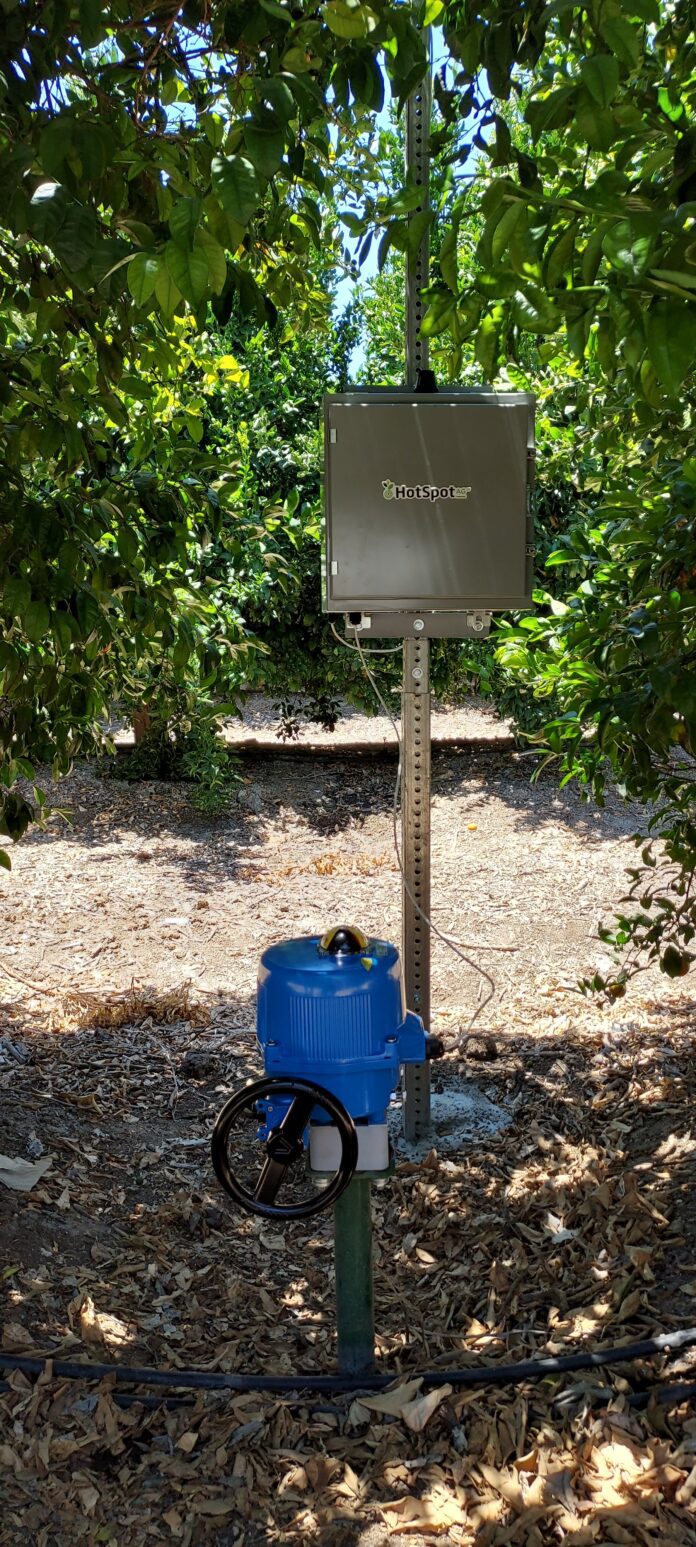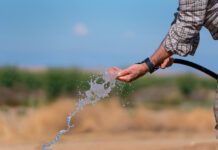
An irrigation system without automation is like having a television set without a remote.”
That succinct description by Guillermo Valenzuela of Wiseconn highlighted the value of irrigation system automation in saving water, nutrients and energy.
Irrigation automation is a combination of software tools that create an irrigation schedule. This schedule is then sent to an in-field controller, which activates control valves at the local pump station or in-field valves through buried wire or wireless radios. Modern systems can also control fertigation systems and have fail safe systems in case of any issues in the field.
In a discussion at the Almond Conference, moderator Tom Devol, Almond Board’s senior manager of field outreach and education, stressed next big savings in water use efficiency and nutrition in almond production lies in adoption of automation.
“Automation is where you make big gains in water use efficiency and nutrition,” Devol said. “It is a tool that can allow for more precise control of water application and minimize the potential for error.
“Growers and managers have the freedom to trim an irrigation set to exactly what is needed and not when the irrigator can get to the valve.”
Automation Means Accuracy
“Having an automated system means irrigation is on schedule and water applications will be accurate.”
An automated irrigation system refers to the operation of the system with no or just a minimum of manual intervention beside monitoring. Systems use controllers, sensors and software to make the process more efficient and free up labor to do other orchard tasks.
Almost every system (drip, sprinkler, surface) can be automated with help of controllers, sensors or computers or mechanical appliances. It makes the irrigation process more efficient, and workers can concentrate on other important farming tasks. Advantages of automation include elimination of the manual operation of opening and closing valves. There is the ability to change frequency of irrigation. Systems can be operated at off-peak hours to save on energy costs. Disadvantages include higher upfront cost and a learning curve to operate. Data collection and implementation is necessary for timing, flow rates and amounts. Systems can be wired or wireless. Devol noted that he has never worked with a grower who was not happy when choosing an automated system. Those growers all have received great benefit from the higher upfront cost, he said.
The almond industry has made great strides in water use efficiency, Devol said the next big jump will come from leveraging technology to help solve when and how long to irrigate and automation to precisely execute the irrigations.
Five Things to Know About Automated Irrigation Systems:
1) Labor savings: “It takes time to get used to, but it’s not rocket science,” almond grower and founder of HotSpot James Nichols said. “It is not as complicated now but there needs to be willingness to learn about the system.” Devol said freeing field crews from opening and closing valves allows them to focus on other orchard work that needs to be done. Savings in labor costs can be realized over multiple years. Valenzuela agreed, noting if manual operation of a system must be done two or three times a day, “automation makes life simpler.”
2) Expensive to install? Yes it can be, Devol said, but even with the current economic struggles, this year record incentive funding is available to almond growers who want to move to automation. This is a good opportunity to use the grants to help with water and energy efficiency, he noted. Decisions on a wired system or unwired must be made. Nichols said upfront costs for installation can be high, keeping growers from adoption.
3) It’s not just water: nutrient and energy use can also be optimized by automation. The ability to use off-peak hours means growers can take advantage of lower rates without having to turn pumps on or off during the late night or early morning hours. Panelist Jacob Christford with Ranch System said automation can also help reduce soil variability issues as systems can be set up for shorter (or longer) sets. Optimization of water and nutrients is also beneficial to tree health, Nichols said. He said the first year with automation saw improved leaf nutrient analysis. Years 2 and 3 had yield improvements. “Short term, there are cost saving, but long term, there are economic benefits.” With fertigation, you know you are applying the right amount, he added.
4) Peace of mind: With automation, the system runs the way it is supposed to. Things go as planned, Devol said, and it saves growers and managers from driving from orchard to orchard to verify the irrigation is going as planned. If there is a problem, there will be a notification. Christford said automation makes it easier to schedule shorter, frequent sets, which keeps moisture in the top 18 inches of soil, preventing leaching of nutrients below the root zone. Automated systems also allow growers to save historic irrigation data and use the same scheduling from the previous year, but it can be fine-tuned depending on environmental conditions.
5) Technology not what it used to be: There are mature companies out there, Devol said, and they have fixed prior glitches in the systems. Addressing the wired vs unwired debate, Nichols said there are pros and cons to both. Unwired done right, he said, is more dependable. If a chisel hits a wire, it can take down the whole system. Christford said if wire is already in place, go with it. A wireless system is less expensive to install. Panelist Andres Olivos with Olivos Irrigation said 93% of new system projects are choosing the wireless route.
Developments for automation in the future include site/orchard-specific optimal ET product, near real-time ET forecast product, data fusion product based on multi-scale input (ground sensors, UAV, satellite) and ET product adoption trials and Extension strategy deployment.











